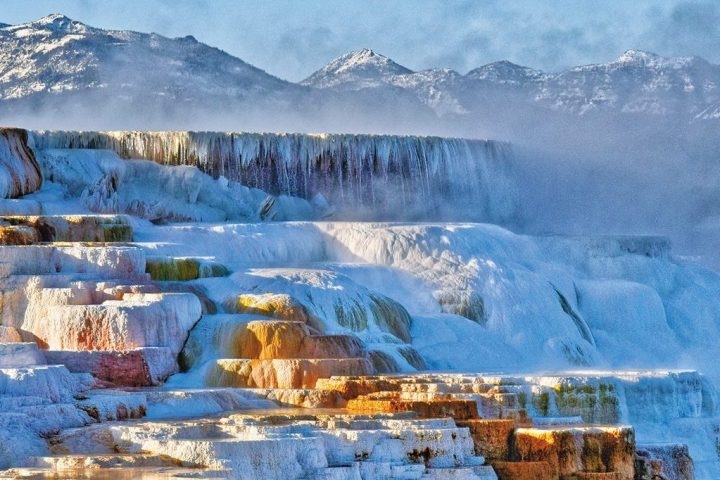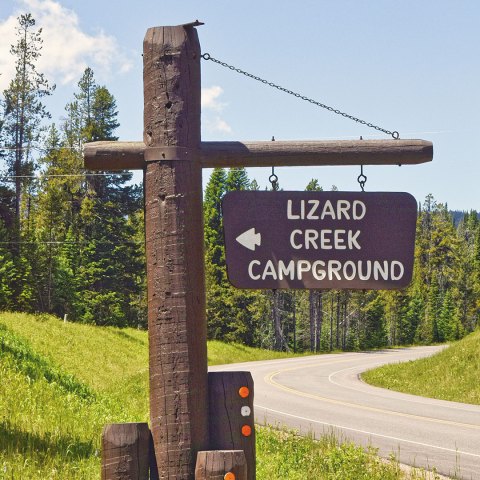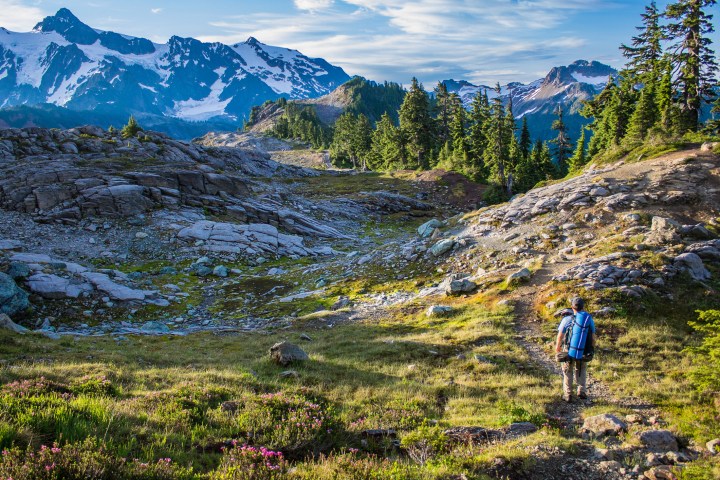Grand Teton National Park Winter Activities
When snow settles on Grand Teton National Park, winter gear comes out. Snow-buried roads and trails turn into skiing and snowshoeing routes; with the snow, you can go anywhere. Here’s your guide to the best winter activities in Grand Teton National Park.
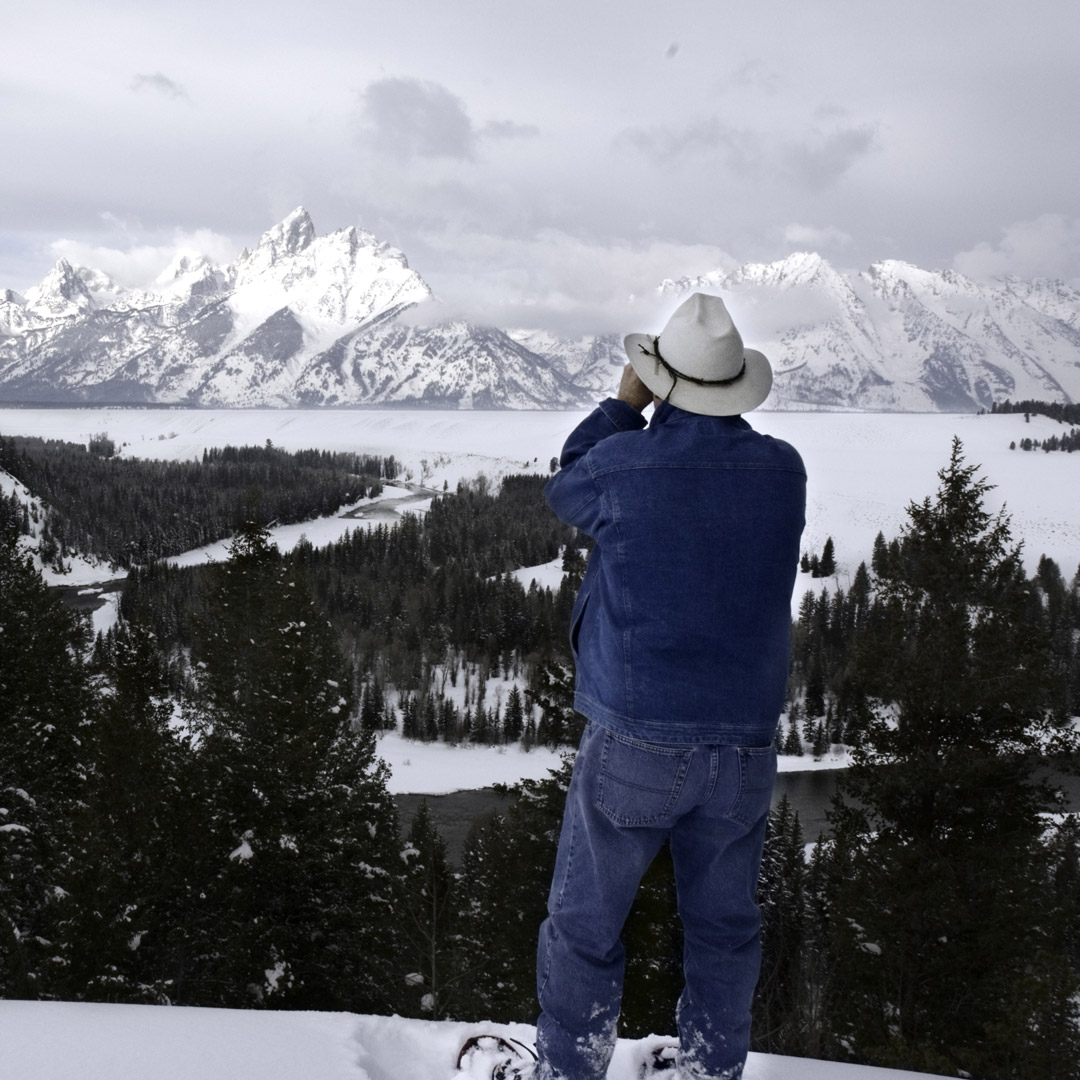
Winter Sports in North Grand Teton National Park
Cross-Country Skiing and Snowshoeing
Trails are not marked in winter, so you’re on your own for route-finding—don’t assume the previous ski tracks go where you want to go. Even roadways become backcountry in winter. Bring a map, GPS or compass, and know how to navigate.
Follow proper etiquette, and take along enough gear to survive an emergency or self-rescue. Snowshoers should travel parallel to ski tracks, but not on them. If skiing or snowshoeing where snowmobiles travel, stay to the right. If you are touring on closed roads, you won’t encounter much avalanche danger, but check conditions at Jackson Hole Avalanche Forecast (307/733-2664) to understand the snow surface.
Grand Teton has a brochure (www.nps.gov/grte) that shows popular ski and snowshoe routes, where to park vehicles, and winter wildlife closure zones. The nearest rentals and guides for cross-country skiing and snowshoeing are in Jackson.
Inside the Park
From Signal Mountain Lodge, climb six miles and 800 feet in elevation on Signal Mountain Road to the summit of Signal Mountain for views of the Tetons. This intermediate tour requires the ability to ski downhill on the return trip; when the conditions are right, gravity does all the work. From the Colter Bay Visitor Center, the Swan Lake and Heron Pond Loop (2.6 miles round-trip) is more suitable for beginners. At Flagg Ranch, the Polecat Creek Loop (2.5 miles round-trip) and South Flagg Canyon Trail (5 miles round-trip) are easy routes with minimal climbing. You can also tour the Grassy Lake Road/Ashton-Flagg Ranch Road or the road into Yellowstone National Park, but you will encounter snowmobiles.
Outside the Park
Outside the park east of Moran Junction, Turpin Meadow Ranch (24505 Buffalo Valley Rd., 307/543-2000, 9am-5pm Tues.-Sun. winter, $15 adults, $5 kids) grooms 15 kilometers of trails for skate and classic skiing. Rentals run $10-30 per day.
Snowmobiling
Grand Teton National Park does not permit snowmobiling on snow-buried roads, but it does allow machines on Jackson Lake when it is frozen. All snow machines in the park must be BAT (Best Available Technology)-approved. Grassy Lake Road/Ashton-Flagg Ranch Road is a popular backcountry snowmobile route in winter. You don’t need a guide to snowmobile on Jackson Lake or Grassy Lake Road.
Guides and Rentals
Grand Teton National Park has no companies licensed to guide snowmobile trips in the park. However, snowmobiles are available to rent in Jackson to take out on your own. Headwaters Lodge at Flagg Ranch (800/443-2311, daily mid-Dec.-mid-Mar., $275-325 driver, $175 extra rider) serves as a jumping-off point for touring Yellowstone National Park by snowmobile in winter. Tours go to Old Faithful or Grand Canyon of the Yellowstone. Both rides demand stamina, as they last 8-12 hours. While you will stop for sightseeing, you’ll be straddling the machine for much of the day. Rates include snowmobiles, helmets, boots, winter suits, breakfast, lunch, and snacks. Park entrance fees are extra. Plan to tip your guide 15 percent.
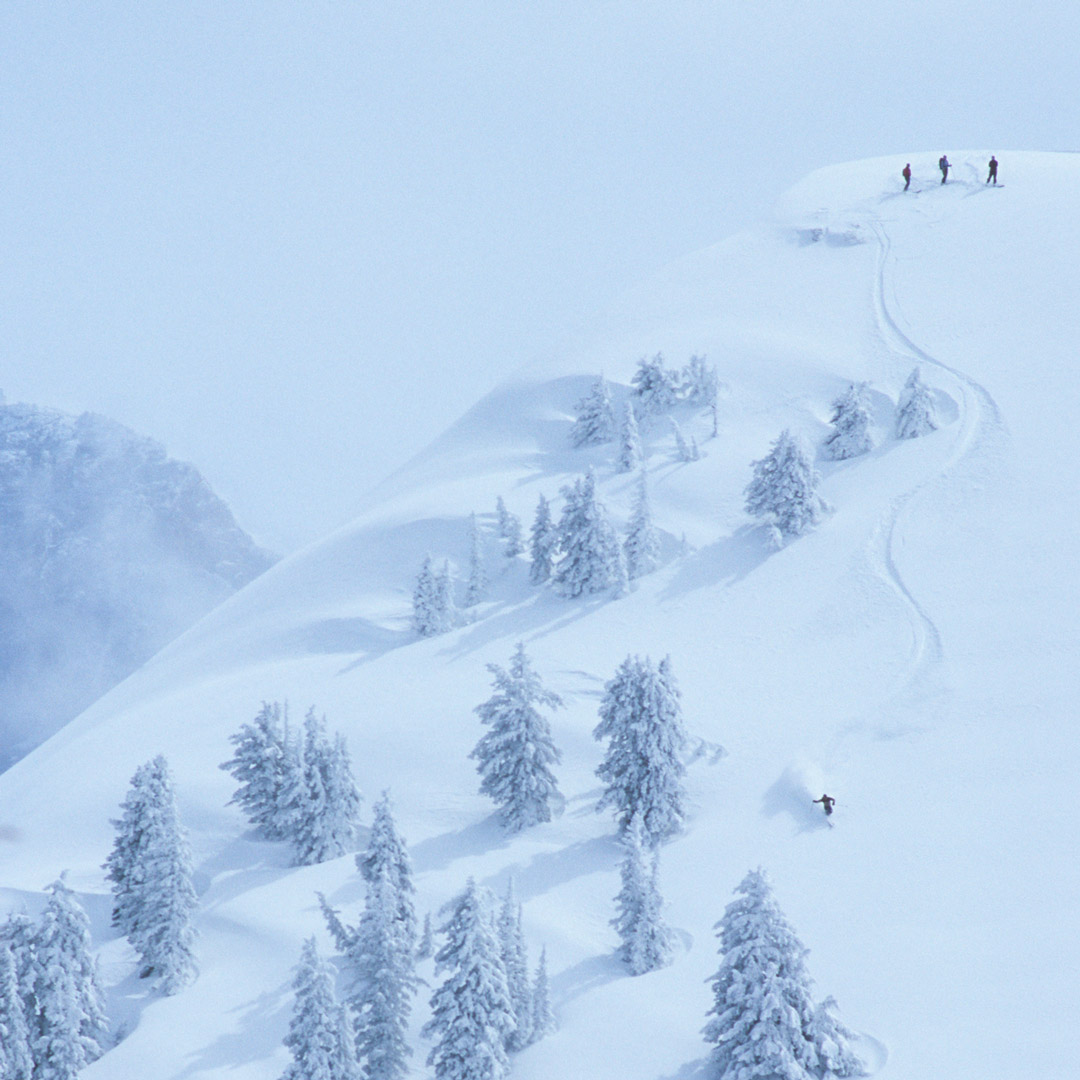
Winter Sports in South Grand Teton National Park
In southern Grand Teton National Park, winter sports consist of the silent sports: backcountry skiing, cross-country skiing, and snowshoeing. Snowmobiling on snow-buried roads is not permitted, and as of 2015 snowbikes are not allowed. The park closes several zones in winter to protect wildlife, including the Snake River bottom. Check on park closures online (www.nps.gov/grte) or in the winter edition of the park’s official newspaper. A good resource for snow conditions all over the park is compiled and updated periodically by the Jenny Lake climbing rangers.
Venturing into Grand Teton National Park in winter demands preparedness and attention to weather and snowpack. While most park roads convert to touring trails and are not in avalanche zones, they can see whiteouts, high winds, and frigid temperatures. Prepare accordingly to prevent exposure and hypothermia. Traveling into mountain canyons or skinning up peaks to ski down will increase exposure to avalanches. Take the appropriate survival and avalanche gear along and be prepared to self-rescue. Check for avalanche conditions updated daily through the Jackson Hole Avalanche Center (307/733-2664).
Cross-Country Skiing and Snowshoeing
November-April some roads in the national park close to vehicles, which means they turn into cross-country ski and snowshoe routes. From the Taggart Lake Trailhead to Signal Mountain Lodge, Teton Park Road (14 miles) becomes a winter ski and snowshoe trail; it’s the way to ski to frozen Jenny Lake. The road is groomed twice a week mid-December-mid-March (call 307/739-3682 for current grooming conditions). Hit the trail on Friday and Monday for fresh-buffed tracks. Follow protocol on the groomed trail: Snowshoers should walk on the smooth grooming, not the tracks cut for skiing.
In winter, closed Moose-Wilson Road offers a road tour through a forest, but the road is not groomed. Be ready to break your own trail or follow previous tracks from skiers and snowshoers. From the Granite Canyon Trailhead, you can tour the road north to the Laurance S. Rockefeller Preserve Center (closed in winter) and circle Phelps Lake on trails. Park at the Death Canyon junction to tour south on the road. Antelope Flats Road also offers winter touring, although its wide-open plain can kick with wind. Taggart and Bradley Lakes make good trail destinations for those who want to get off the roads. Because it is one of the few trailheads that drivers can access in winter, the lakes are a popular destination.
Backcountry skiers and snowboarders can access Grand Teton National Park from the valley floor along Teton Park Road and the Moose-Wilson Road or from neighboring Jackson Hole Mountain Resort.
Guides and Rentals
Several companies are licensed to guide winter tours in the national park and even instruct avalanche courses. Most trips are scheduled on demand (consider pairing up with other visitors to reduce rates). Hole Hiking Experience (866/733-4453) offers 2-6-hour cross-country ski and snowshoe trips, some in tandem with wildlife-watching, sleigh rides, or dogsledding. Teton Backcountry Guides (307/353-2900) leads full-day backcountry skiing, cross-country skiing, or snowshoe tours. Exum Mountain Guides (307/733-2297) leads one-day backcountry ski trips, ski mountaineering excursions, and ski camps. Jackson Hole Mountain Guides (307/733-4979) also leads one-day backcountry ski trips, ski mountaineering expeditions, and ice climbing in Death Canyon.
Dornan’s Trading Post (12170 Dornan Rd., Moose, 307/733-3307 or 307/733-2415, ext. 302, 9am-5pm daily Dec.-Mar., $18/day) rents cross-country skis and snowshoes by the day or week. You can also rent backcountry skis, cross-country skis, and snowshoes for adults and kids in Jackson and Teton Village.
Explore more of the parks
Newsletter Signup
By clicking ‘Sign Up,’ I acknowledge that I have read and agree to Hachette Book Group’s Privacy Policy and Terms of Use
Pin For Later

By clicking ‘Sign Up,’ I acknowledge that I have read and agree to Hachette Book Group’s Privacy Policy and Terms of Use

